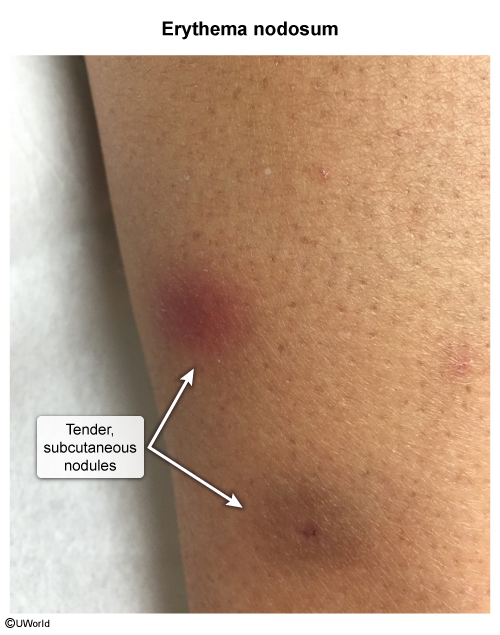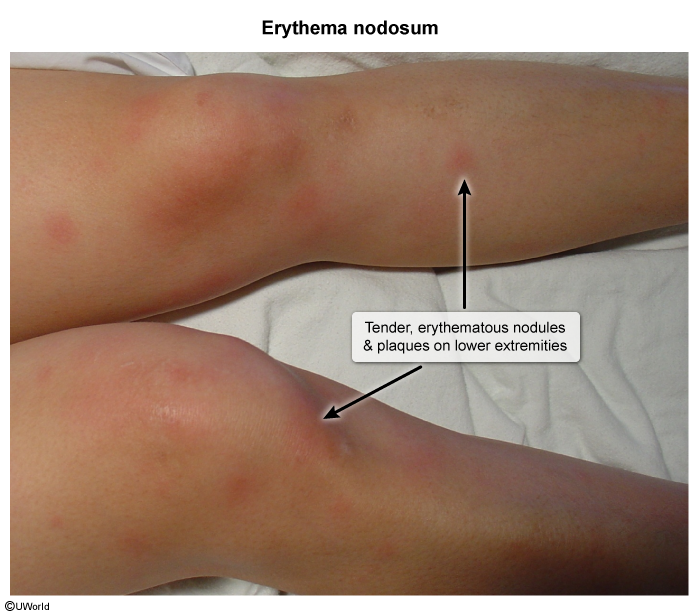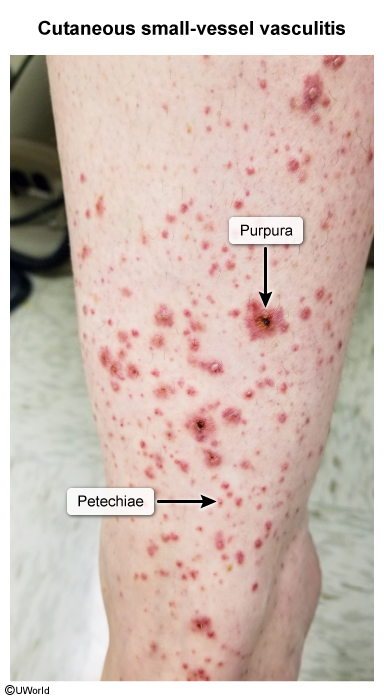Erythema Nodosum
Article Sections
Introduction
Erythema nodosum (EN)—erythema = red; nodosum = full of knots—describes tender, red nodules caused by inflammation in the subcutaneous fat (panniculitis). EN likely results from delayed-type hypersensitivity and most commonly affects the bilateral shins. Because EN can be triggered by many possible antigens, it has many possible causes (eg, infections, medications, inflammatory disorders). Therefore, all patients with EN should be evaluated for underlying causes before being characterized as having idiopathic EN, which represents up to half of cases.
Pathogenesis and histopathology
EN results from immune-mediated inflammation in the subcutaneous fat and can be triggered by many antigens. It most likely represents a delayed (type IV) hypersensitivity response (eg, T-cell activation, granuloma formation), although a combination of immune mechanisms may be implicated (eg, immune complex deposition [type III] in subcutaneous venules causes neutrophil recruitment and reactive oxygen species formation).
Continue Learning with UWorld
Get the full Erythema Nodosum article plus rich visuals, real-world cases, and in-depth insights from medical experts, all available through the UWorld Medical Library.
Images


